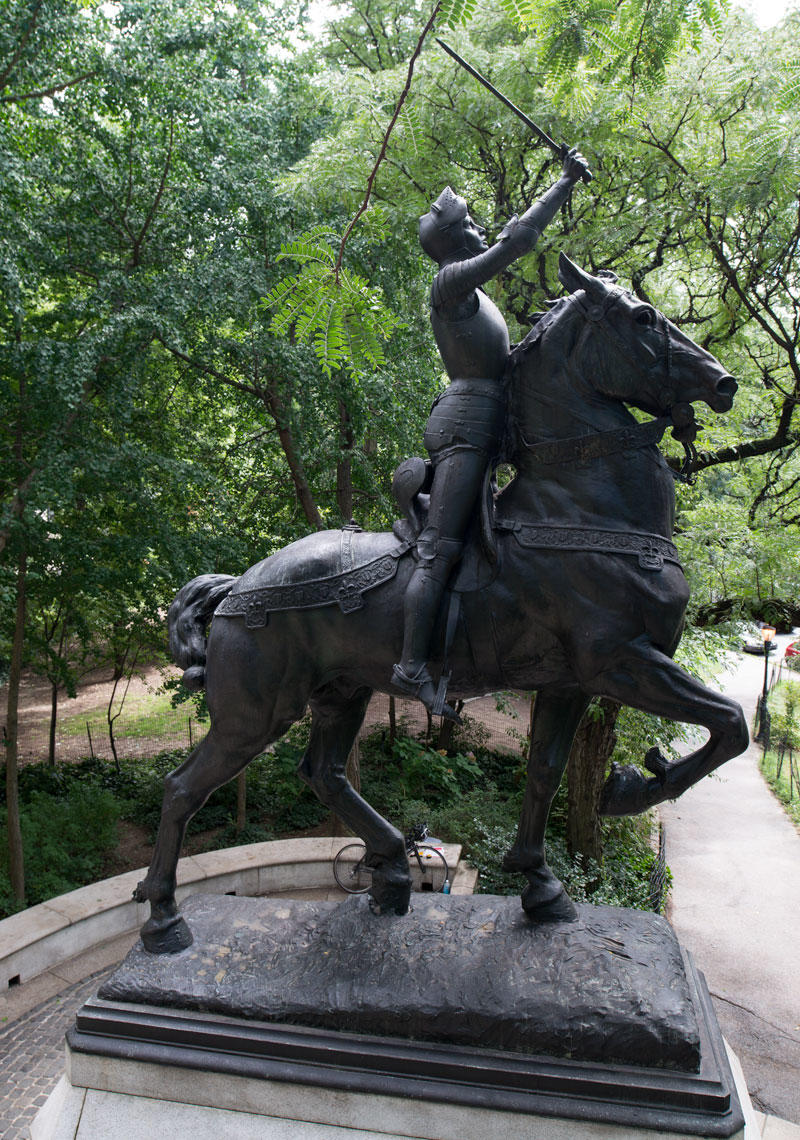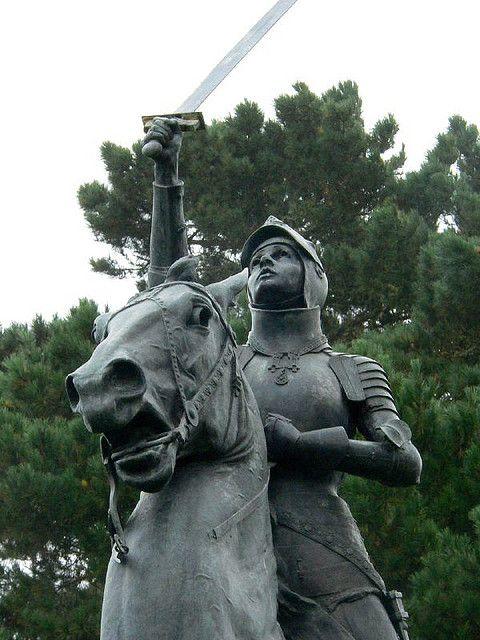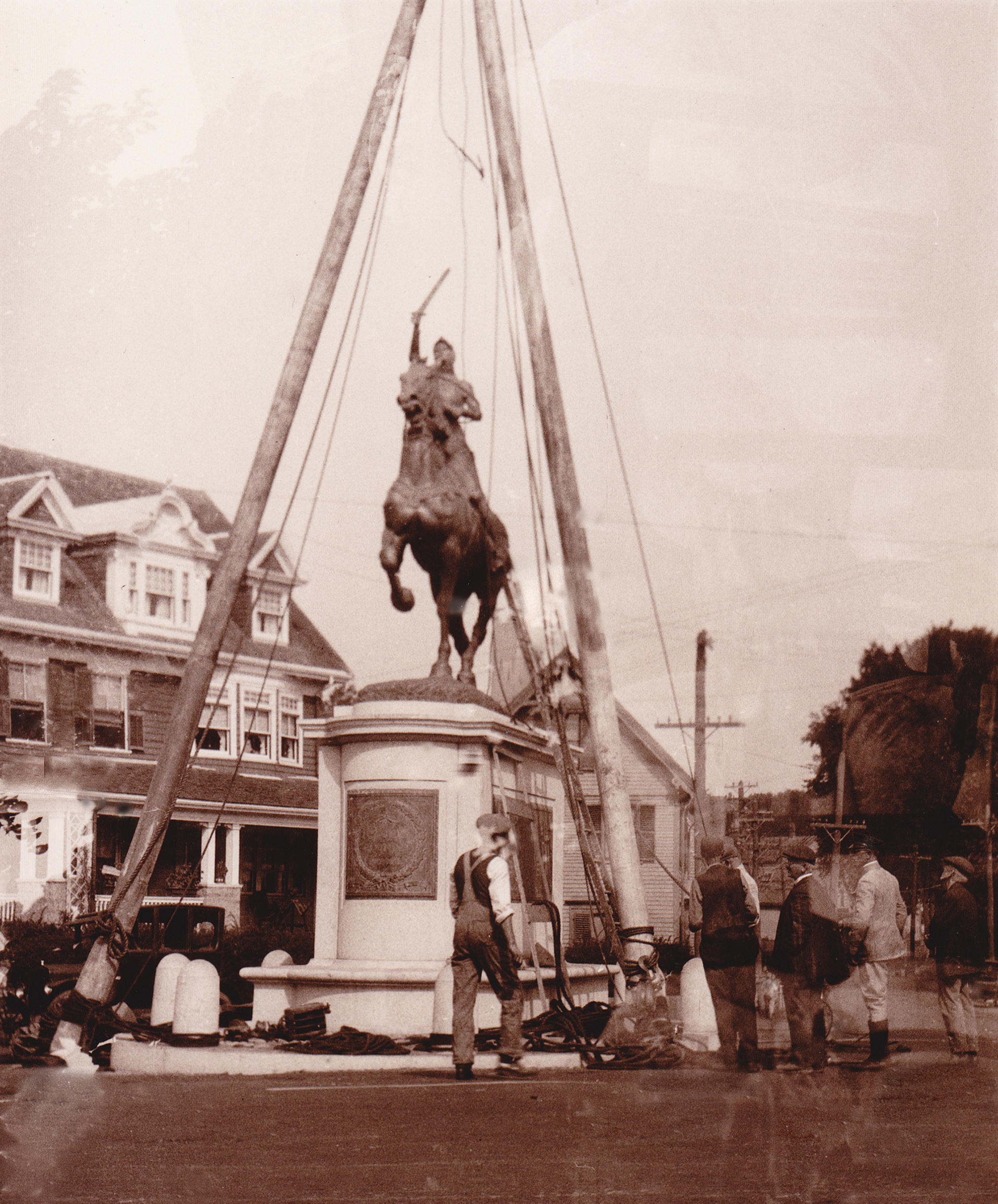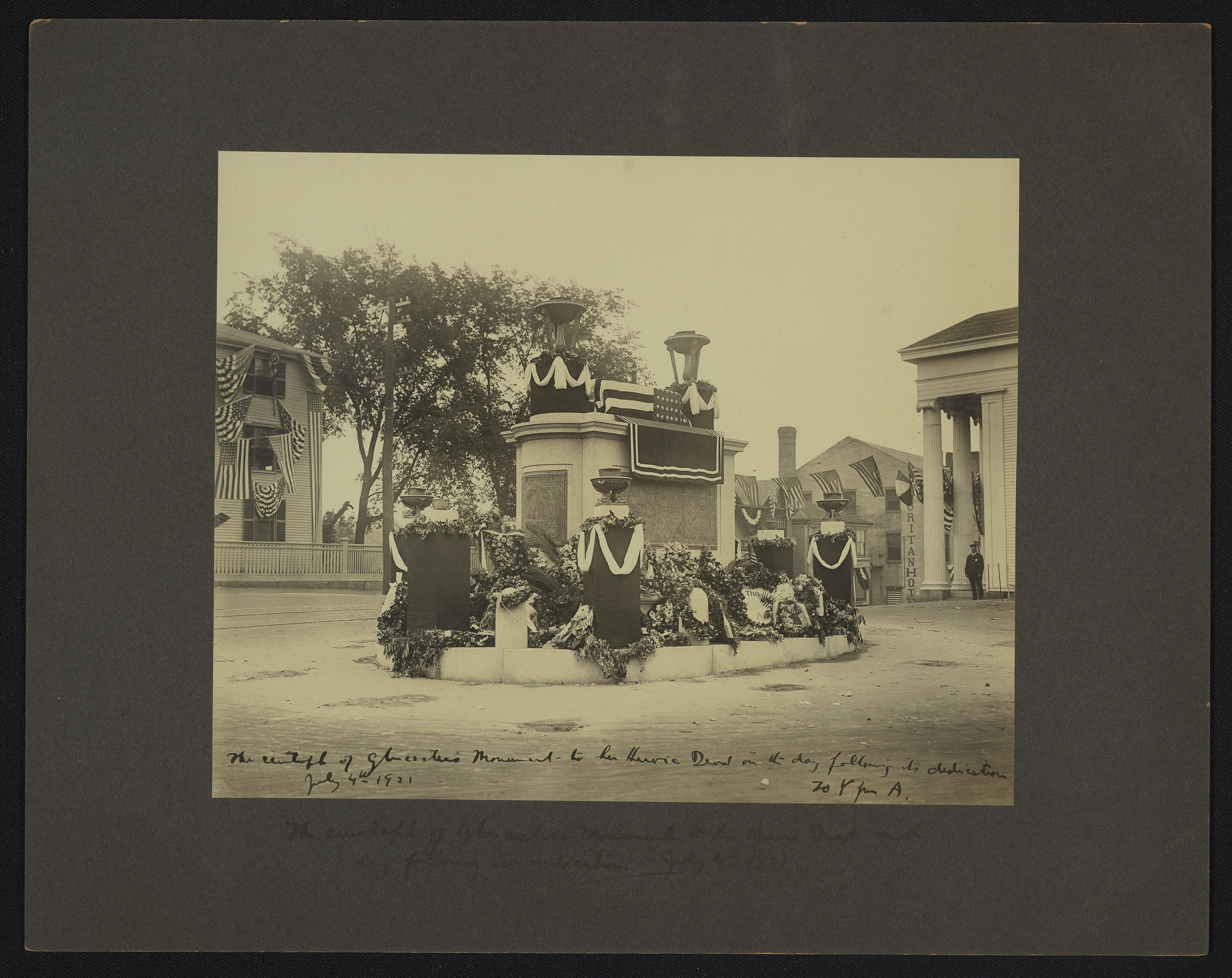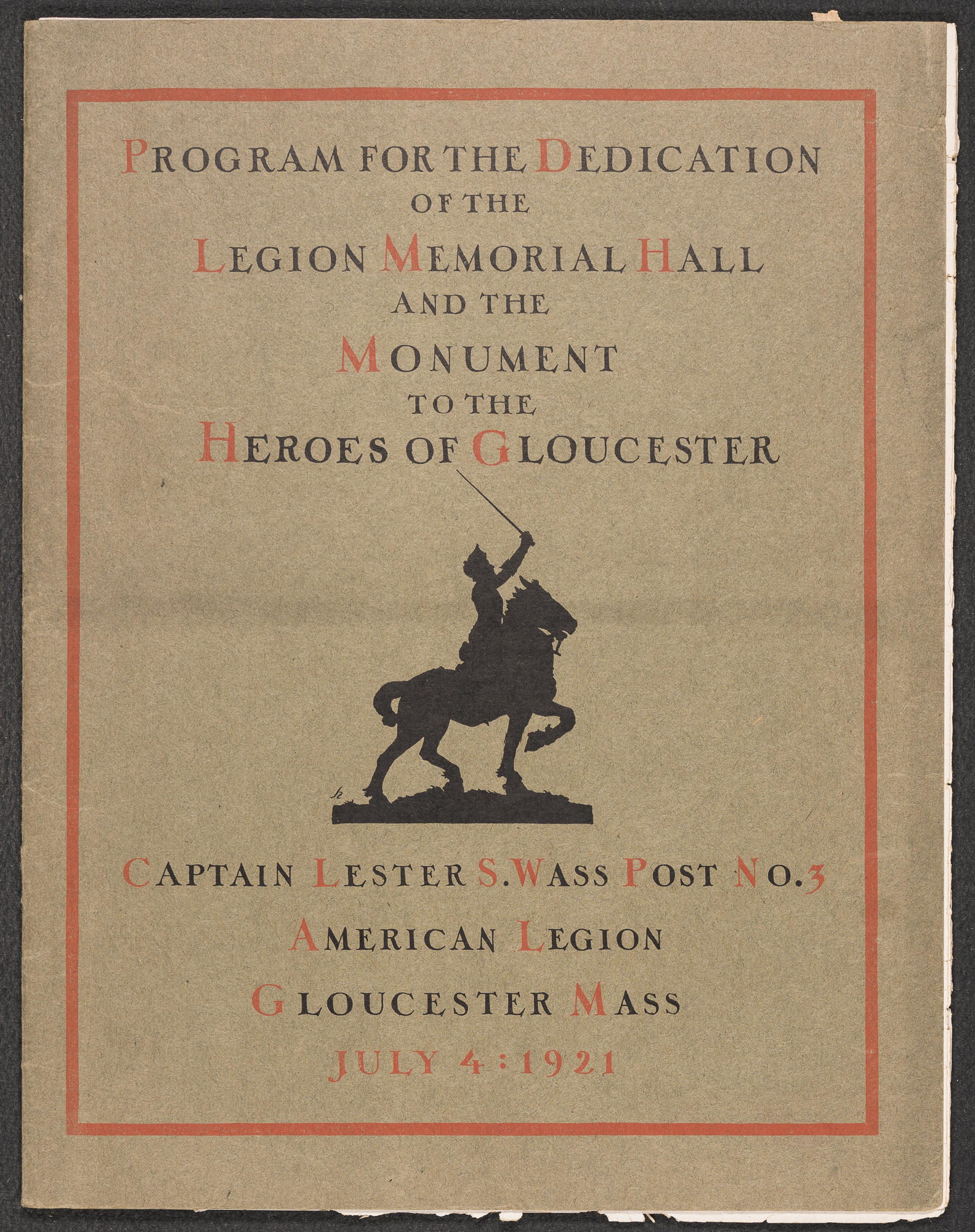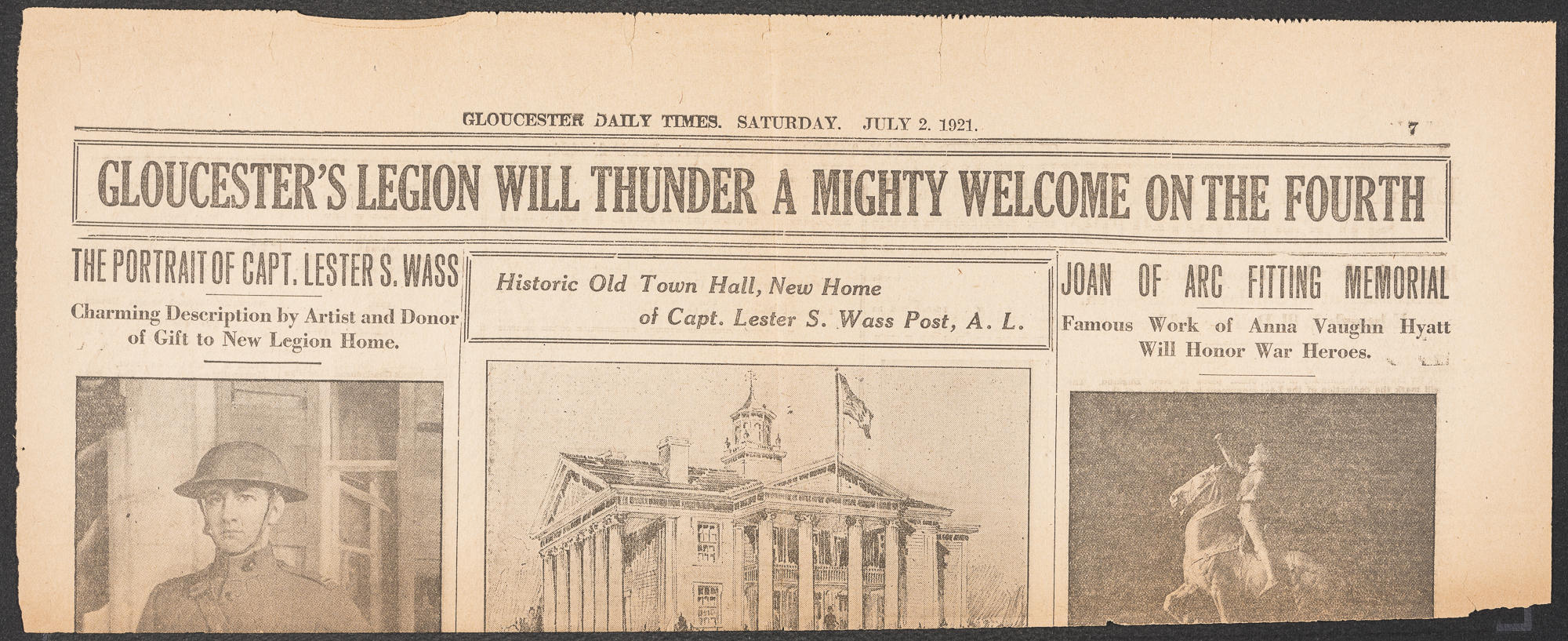In February of 1921, Isabella Stewart Gardner’s good friend and future congressman A. Piatt Andrew sent her a postcard with a note saying, “A preview of what you will see here next summer.” The subject of the card was Joan of Arc by sculptor Anna Vaughn Hyatt Huntington, and he was referring to his plans for a memorial to the veterans of World War I in Gloucester, Massachusetts.
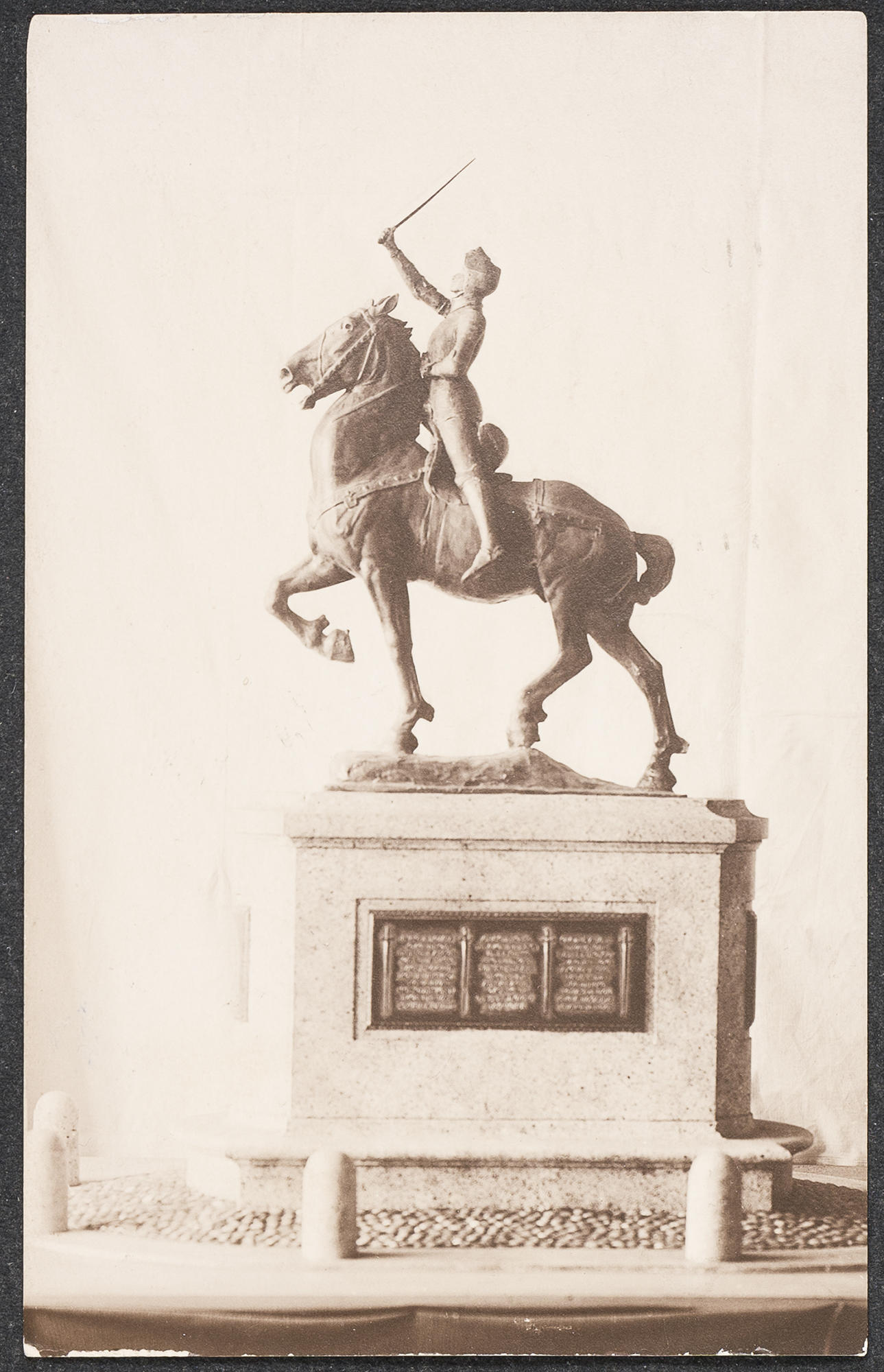
Postcard of Anna Vaughn Hyatt Huntington’s statue of Joan of Arc. Sent to Isabella Stewart Gardner by A. Piatt Andrew, 10 February 1921
Isabella Stewart Gardner Museum, Boston (ARC.000244). Isabella kept this postcard in the Macknight Room
Andrew, who made Gloucester his adopted home, was perhaps being overly optimistic about Isabella attending the dedication of the memorial later that summer. Since suffering her first stroke in 1919, Isabella was less mobile, and it was difficult for her to visit her favorite vacation spot on the North Shore. (You can read more about her love of Gloucester here.) Perhaps Isabella also hoped she might be able to attend; this was ultimately derailed by a bout of appendicitis.
Knowing that Isabella didn’t like to miss out, Andrew kept her informed of his plans to commemorate Gloucester’s part in the war. He was the founder of the American Field Service which provided ambulances to support the French Army prior to the United States’ entry into the conflict. Isabella funded two ambulances and corresponded with Andrew and other friends who were on the front lines. She surely wanted to support the memorial as well.
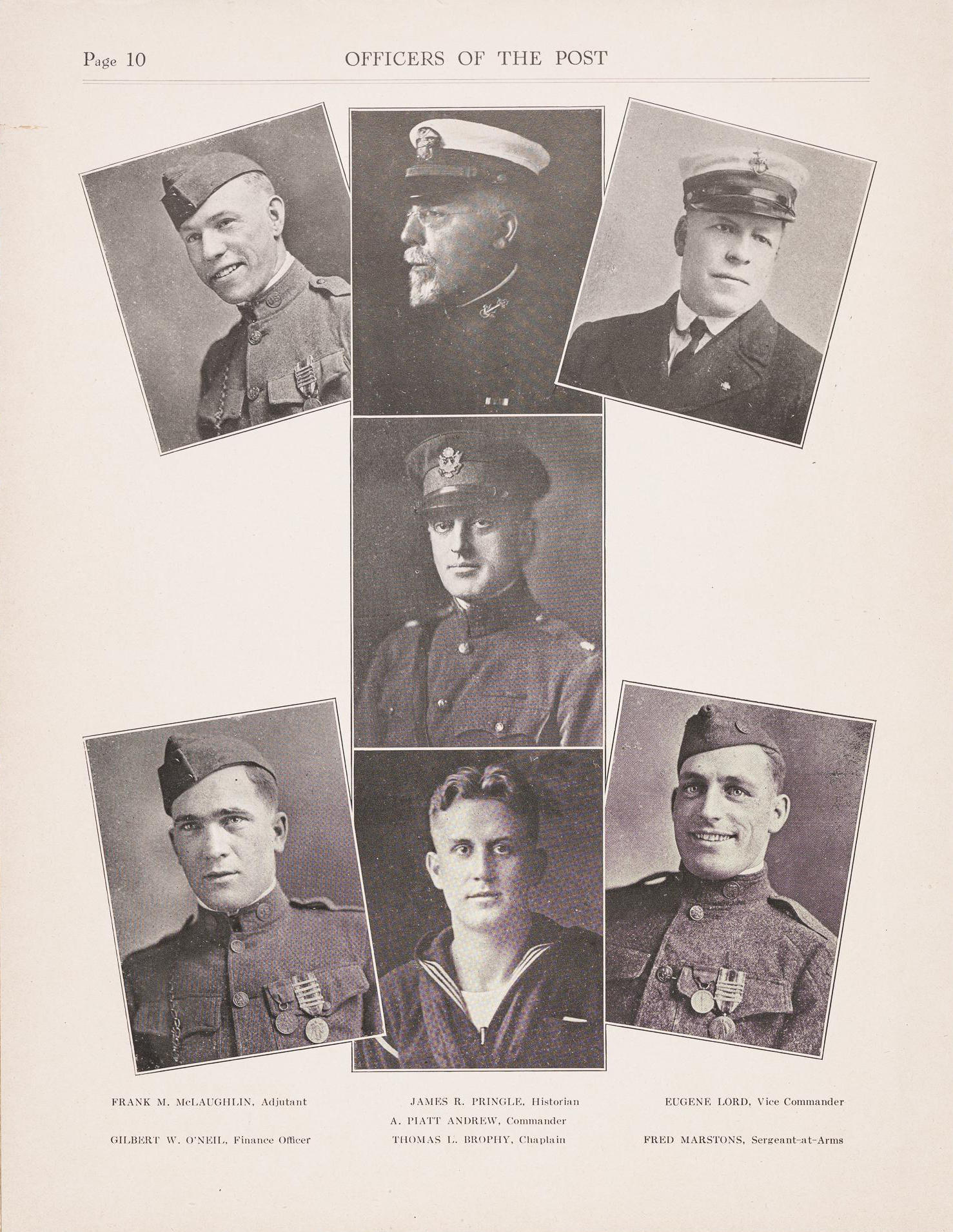
Officers of the Captain Lester S. Wass American Legion Post 3 in Gloucester, Massachusetts from the Program for the Dedication of Legion Memorial Hall and the Monument to the Heroes of Gloucester, 4 July 1921. A. Piatt Andrew, the Commander, is in the center.
Isabella Stewart Gardner Museum, Boston (ARC.009006, p. 10). Isabella kept this program in the Vatichino, her personal treasure trove.
We know Isabella admired the artist selected for this important commission. Anna Vaughn Hyatt Huntington is one of the few women artists represented in the Museum’s collection. She grew up spending her summers in Annisquam, a village in Gloucester, and maintained a studio there throughout her life—the people of Gloucester considered her a local.

Anna Vaughn Hyatt Huntington, 1921
Library of Congress
Huntington established herself as a sculptor of animals—like the small bronze jaguar that Isabella displayed in the Vatichino. Her skills in animal anatomy made her well positioned to try her hand at an equestrian monument, and she looked to the French heroine Joan of Arc for inspiration. Although not yet a saint (she was canonized in 1920), Joan of Arc was a popular persona during World War I—she led the French army in a momentous victory during the Hundred Years’ War. She was also an early feminist icon used by the women’s suffrage movement in the early 20th century in the United States and United Kingdom. This contemporary political symbolism may have appealed to Huntington who faced discrimation in the art world based on her gender.
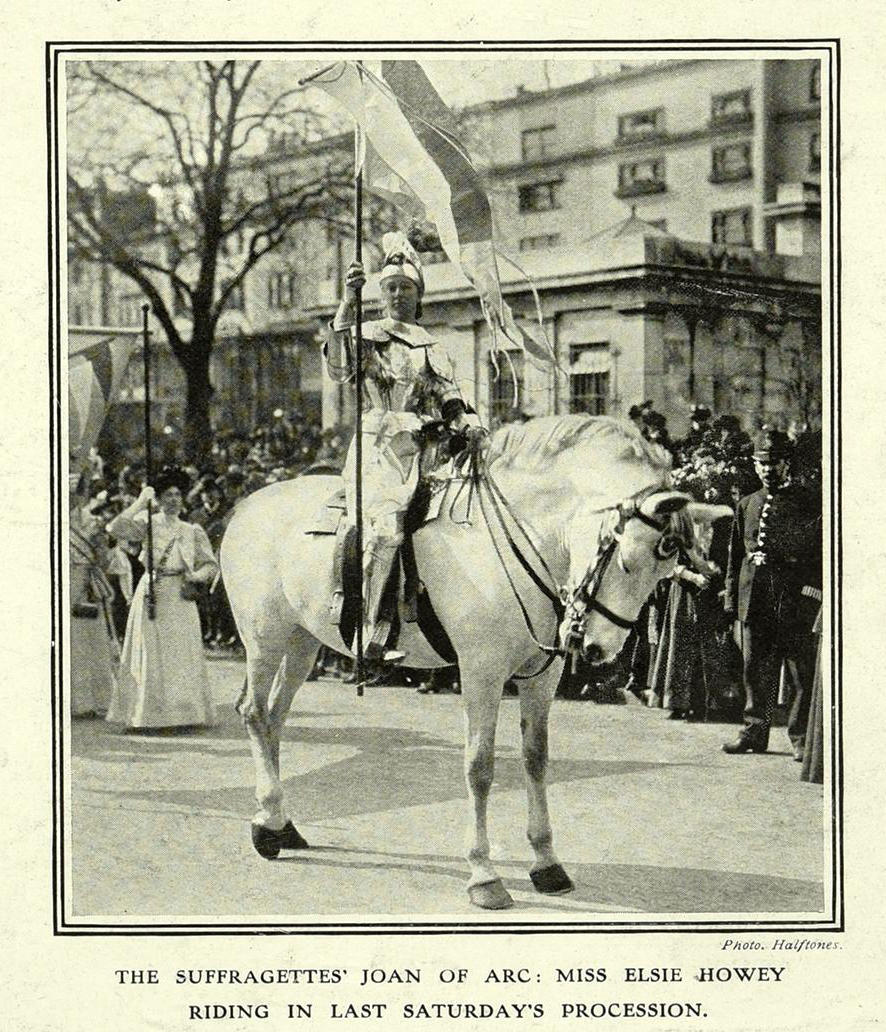
The Suffragette Elsie Howey as Joan of Arc on horseback at a procession in honour of the release of Mrs. Pethick Lawrence from Holloway Prison, 24 April 1909
The Illustrated London News. The National Archives, London (ZPER 34/134)
In 1910, Huntington won an honorable mention in the Paris Salon, a major exhibition of contemporary art, for her life-sized plaster model of Joan of Arc in full armor on horseback, and she soon received a public commission for a bronze version from New York City—the city’s first public art commision by a woman sculptor. Her success led to other commissions of her Joan of Arc composition including for Blois, France, San Francisco, California, Quebec City, Quebec, and Gloucester, Massachusetts.
The city of Gloucester had a hometown claim on the equestrian statue. Huntington created the work in her Annisquam studio modeling the steed on a horse named Frank, who worked for the Gloucester fire department. The cenotaph, or base meant to look like a tomb, was designed by another Gloucester resident, Frederick G. Hall, who sourced the granite from local quarries.

Marion Boyd Allen (American, 1862–1941), Anna Vaughn Hyatt [Huntington], 1915. Oil on canvas
Collection of the Maier Museum of Art at Randolph College, Lynchburg, Virginia
The cenotaph and Anna’s statue of Joan of Arc were dedicated separately: on July 4 and September 4, 2021 respectively. Andrew wrote to Isabella describing the festivities.
At the September dedication, the Boston Globe reported that Reverend Dr. W. H. Rider compared the spirit of Joan of Arc to the American spirit—the salvation of her nation depended on her unflinching loyalty and devotion to the highest ideals of Government and country.1

Anna Vaughn Hyatt Huntington (American, 1876–1973, sculptor) and Frederick G. Hall (American, 1879–1946, designer of the cenotaph), World War I Memorial for the Sons of Gloucester with Joan of Arc, 1921
Northshore Magazine
Isabella finally saw the Memorial in July of 1922 on her last trip to Gloucester before her death in 1924. Unfortunately her impression wasn’t recorded, but she did indicate her approval by preserving several related mementos in her Museum’s galleries. One of them is the program for the dedication which includes photographs of the tablets from the Memorial with the names of the 57 men, sons of Gloucester, who died in World War I. It’s been one hundred years since the Memorial was dedicated and we honor them and all the men and women who have given their lives for their country—especially on Memorial Day.
1 “Dedicate Statue of Joan of Arc at Gloucester,” Boston Daily Globe (1872-1922), 5 September 1921, p. 12. ProQuest. Web, accessed 21 April 2021.
You May Also Like

Read More on the Blog
Anna Coleman Ladd: Art Helping Veterans

Explore the Collection
A. Piatt Andrew (American, 1872–1936), Photographs of American Field Service Staff and Ambulances in France, 1916

Read More on the Blog
Summer Vacation in Gloucester
